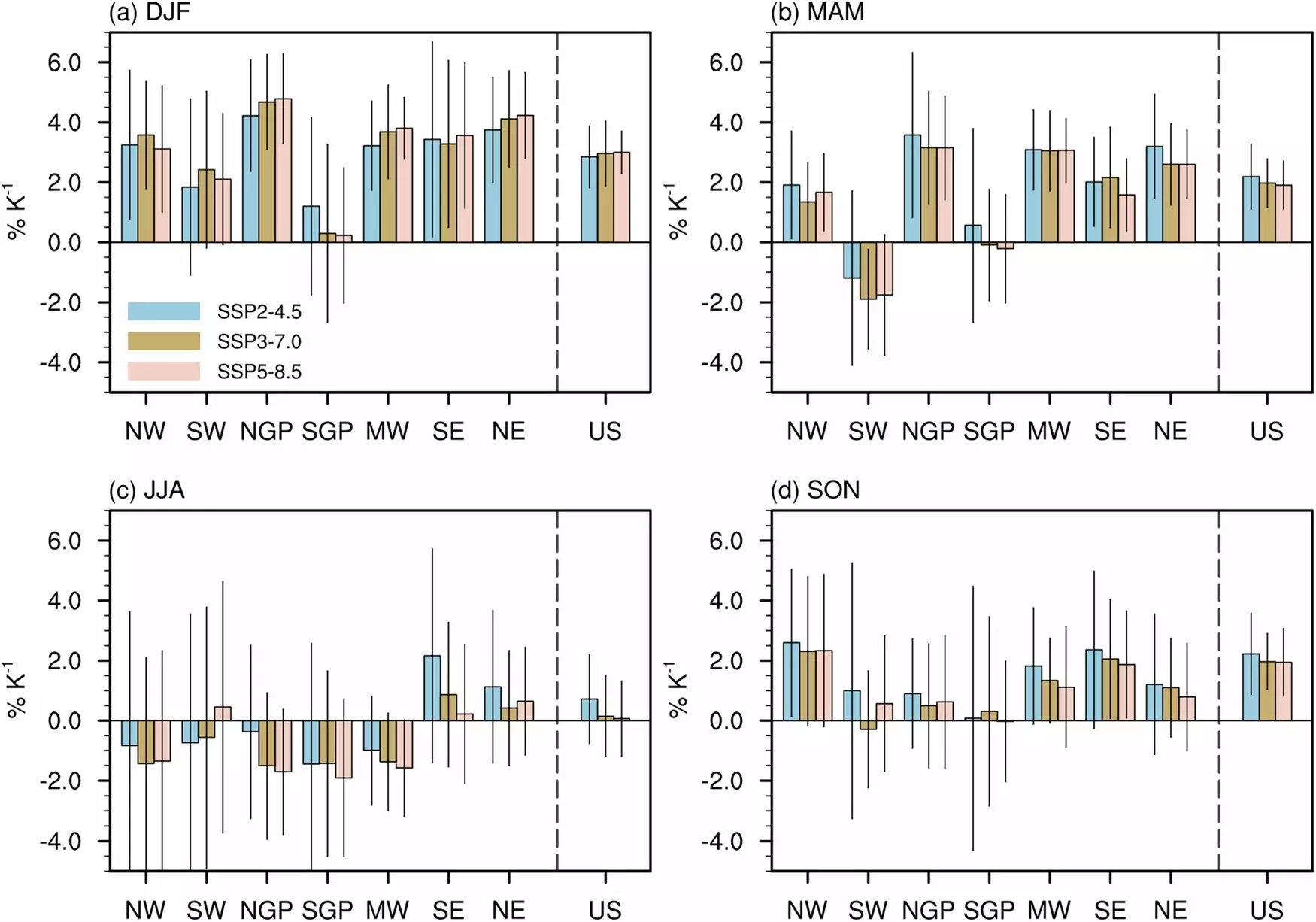As the scientific community continues to unravel the complexities of climate change, recent research has presented alarming predictions for winters across the United States. A comprehensive study, led by Akintomide Akinsanola from the University of Illinois Chicago, has utilized advanced climate models to illustrate a significant transformation in winter precipitation patterns by the end of the 21st century. The findings project greater overall precipitation and a surge in extreme weather events, indicating a paradigm shift that may forever alter how Americans experience winter.
The Evidence: A Data-Driven Analysis
The study, documented in the journal npj Climate and Atmospheric Science, reveals a concerning trend towards wetter winters. Akinsanola’s team employed 19 Earth system models to assess anticipated changes in winter precipitation across seven distinct U.S. subregions, comparing future projections (2070-2099) with historical data from 1985-2014. The results indicate that mean winter precipitation in the U.S. could increase by approximately 2% to 5% for every degree of global warming, a direct consequence of climate change. Particularly notable is the Northeast and Midwest, which are expected to experience the most drastic increases in precipitation and a heightened frequency of “very wet” winters—events that would have ranked in the top 5% of historical totals.
One of the most striking implications of these changes is the projected transition from snow to rain in various regions. This phenomenon may significantly impact not only seasonal climates but also the infrastructure designed to handle winter weather. As rain replaces snow, reduced snowpack will lead to lower water retention in areas that rely on snowmelt for water resources, threatening agricultural systems and drinking water supplies. The need for adaptability becomes increasingly clear as stressed infrastructure must brace for an influx of rain rather than the gradual melt-off traditionally seen with snow.
Regional Disparities: A Mixed Bag Across the Country
The study highlights stark differences in predicted climatic changes across the United States. While the Northwest and Northeast are poised for the most significant increases in winter precipitation, the southern Great Plains, encompassing states like Texas and Oklahoma, presents a curious contrast. Here, projections remain uncertain, with both increased wet events and more frequent extreme dry conditions balancing each other out. Such discrepancies emphasize the intricate nature of climate change, where local variances can produce vastly different scenarios for communities across the nation.
The study’s findings signal a need for extensive planning and infrastructure upgrades. With increased mean precipitation and more frequent extreme weather events on the horizon, cities must proactively address potential flooding and storm damage. As emphasized by Akinsanola, adjustments such as enhancing drainage systems and fortifying buildings are necessary to ensure resilience against the projected increase in precipitation extremes. The urgency for local governments and urban planners is palpable; ignoring these changes could lead to catastrophic consequences for both people and resources.
Looking ahead, Akinsanola’s future research aims to delve deeper into high-resolution models to predict more localized changes in precipitation patterns and associated extreme events. This will provide critical insights into how specific regions can adapt to the evolving climatic landscape. Collaborations with institutions like Argonne National Laboratory underline a commitment to thorough and impactful research that aims to mitigate the ramifications of these significant changes.
The study led by Akinsanola serves as a clarion call, urging the nation to recognize the profound shifts coming to winter precipitation patterns due to climate change. As Americans brace for a future characterized by wetter winters and increasingly extreme weather, strategic foresight and robust infrastructure development will be paramount. Only by adapting to these changes can individuals, communities, and ecosystems hope to thrive in a rapidly transforming climate landscape. The time to act is now, as the consequences of inaction risk irreversible impacts on our environment and society.


Leave a Reply